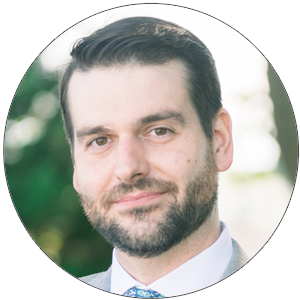Quest for Quantum: Could the key to the secrets of the universe be discovered in Colorado?

What if I told you that the laws of traditional physics aren’t enough to unlock the secrets of the universe?
What if I said that there are people devoted to a fundamentally new way of understanding science that could revolutionize the way we discover new drug therapies, map the cosmos, protect sensitive data, combat climate change and maybe even discover new forms of life?
What if I told you that you’re living smack dab in the middle of the place where this new movement — a technological and theoretical system ripped from the pages of a science-fiction novel — is being puzzled out?
SPONSORED CONTENT
Business Cares: April 2024
In Colorado, 1 in 3 women, 1 in 3 men and 1 in 2 transgender individuals will experience an attempted or completed sexual assault in their lifetime. During April, we recognize Sexual Assault Awareness Month with the hopes of increasing conversations about this very important issue.
What if “Boulder and the Front Range [was] the Silicon Valley of quantum computing?” Maybe it is, ColdQuanta Inc. president Paul Lipman prognosticates.
“Quantum has the opportunity to be as transformative for the world or more so than the internet,” he told BizWest.
Quantum researchers are “trying to get at the big questions” in hopes of discovering and better understanding new types of physics “that are beyond our current framework and theoretical understanding of the universe,” Colorado State University physics professor Sam Brewer said.
The Boulder Valley — with the world-class University of Colorado physics department, the National Institute of Standards and Technology, and some of the most prominent quantum computing companies in the world — has become, over the last three decades or so, the epicenter of the field.
“You wouldn’t know it unless you’re in the industry or are really into this technology, but we really have a special thing going in Colorado,” said Philip Makotyn, executive director of CUbit Quantum Initiative, a CU organization dedicated to catalyzing quantum research across the university community.
What is quantum?
Quantum theory attempts to explain the behavior of matter at atomic and subatomic levels.
“At its most fundamental level, the universe is governed by the laws of quantum mechanics,” said Lipman, leader of the Boulder firm developing quantum technology to freeze individual atoms to near-absolute zero, a point at which they produce minimal vibration. In this state, those atoms can be used to create sensors with extremely granular accuracy for use in satellite navigation, scientific research and other cutting-edge technological pursuits.
Quantum computing uses principles of quantum theory to build machinery with capabilities that far exceed traditional computers.
Classical computers use bits that can hold the value of either 1 or 0, which severely limits their processing ability.
Quantum computers are built with qubits, which harness the quantum property of superposition to hold the value of both 1 and 0 simultaneously.
If a bit is a coin sitting on a table, with the property of heads or tails, a qubit is a coin that’s been flipped into the air and has yet to land — it simultaneously has the properties of heads and tails.
Computing power is increased exponentially with each additional qubit.
Simply put — or as simply put as can be given a field of science that’s so new and potentially groundbreaking — quantum computers are “not going to give you faster video games or better accounting software,” Lipman said. “But it will enable computers to solve important, world-changing problems that are simply impossible to solve with conventional computing capacities.”
Born at NIST
Quantum computing’s birth can be traced directly back to NIST and the 14th International Conference on Atomic Physics held there in 1994.
It was at this conference that certain scientific breakthroughs were made and it was agreed “that quantum computers will be a thing,” NIST physicist and CU lecturer Dietrich Leibfried said.
“This conference happened here for a reason and that’s because these scientists were here in Boulder,” he said.
But why NIST? Why was the government agency tasked with standardizing measurements a hotbed for quantum scholars?
The answer: clocks.
The institute is well known for its super-precise atomic clocks, and it turns out that the ideal setting for building quantum computers is much like the environment needed to build atomic clocks.
“The first place you can describe quantum advantage as being achieved is in timekeeping,” Lipman said. “We can create clocks based upon quantum that are the most sensitive instruments ever created by humankind.”
The importance of ultra-precise timekeeping is apparent in applications from investing in financial markets to developing autonomous vehicles and precision navigation to the measurement of the warping of time and space.
NIST furthered its involvement in the quantum space with research conducted by JILA, a partnership with CU formed in 1962 that was formerly known as the Joint Institute for Laboratory Astrophysics.
“It really is a special place,” Makotyn said. “It attracted the best talent that existed at the time in this precision measurement and spectroscopy area” that eventually evolved into the quantum field.
The Boulder region’s status in the quantum world has only grown in recent years after the passage of the National Quantum Initiative Act of 2018, in which the National Science Foundation declared quantum technology a national priority and established five centers of research across the country. One of those centers is at CU.
“It was a very, very competitive search for those places and all of the most prestigious universities applied. CU was one of the first three awarded. That shows that we are truly a national leader in this stuff,” Makotyn said.
The Quantum Economic Development Consortium, a group that brings together academics and business leaders to discuss ways in which quantum technology could benefit the American economy, is also run out of NIST.
From the ivory tower to the boardroom
“From the ivory towers, that’s where it started. Not in the commercial world,” Leibfried said of the quantum revolution.
But it didn’t take long for the commercial world to catch on, and the Boulder Valley region has since given rise to some of the biggest players in the industry. Examples include ColdQuanta; Quantinuum, a Broomfield company newly spun out of Honeywell International Inc. (Nasdaq: HON); Atom Computing; and LongPath Technologies Inc.
“The whole genesis of our company grew out of the work that was being done at CU — the first Bose-Einstein condensate, the fifth form of matter, was created in the labs,” Lipman said. “That’s what led to the creation of ColdQuanta.”
While some companies spun out of CU, JILA and NIST, others sought out the region to share proximity with those major quantum players.
“There’s talent in this area, and we came to them,” Quantinuum president Tony Uttley said. “We said, ‘We’re going to give you the kind of environment that you want to be working in, we’re going to give you access to the equipment that’s state of the art. We’re going to provide the resources and ambition to do things that are the first of their kind.”
The interplay between the industry participants and academia has created a “positively reinforcing cycle” and venture capital is starting to take notice, Lipman said.
“We are seeing a significant interest in quantum from a wide array of financial partners,” he said.
Part of the reason for this interest is the seemingly endless number of applications for quantum technology — many of the applications appear quite lucrative.
“When you think of drug discovery today, it’s a multi-year, multi-billion dollar thing where molecules are being tested in labs to figure out what their behavior and effects are,” Lipman said. “The promise of quantum computing — and we’re still a few years away from this being possible — is the ability to model precisely what the interaction of these molecules will be. That will be absolutely groundbreaking in pharmaceuticals, in life sciences, in material sciences. When you think about impact for humanity, that will probably be the most visceral of the potential applications.”
Labor challenges
Like nearly all industries, the Boulder Valley’s quantum industry is facing a severe labor shortage.
“When you talk about the biggest impediment to progress — and this is not just for ColdQuanta — it’s the pipeline of talent,” Lipman said.
It’s not just physicists that these companies need.
“We need a diverse group — not just physicists,” Makotyn said. “We need engineers, mathematicians, business people, a broad range of skill sets.”
Familiarizing younger people with the opportunities presented by quantum technology is key, industry experts say.
“There’s a place for us to do more on the state and local level in Colorado,” Lipman said. “That encouragement or education, the funding of education, pushing that education down into the high school level, is an important part of creating the necessary pipeline of talent.”
What if I told you that the laws of traditional physics aren’t enough to unlock the secrets of the universe?
What if I said that there are people devoted to a fundamentally new way of understanding science that could revolutionize the way we discover new drug therapies, map the cosmos, protect sensitive data, combat climate change and maybe even discover new forms of life?
What if I told you that you’re living smack dab in the middle of the place where this new movement — a technological and theoretical system ripped from the pages of a science-fiction novel — is being puzzled…
THIS ARTICLE IS FOR SUBSCRIBERS ONLY
Continue reading for less than $3 per week!
Get a month of award-winning local business news, trends and insights
Access award-winning content today!


